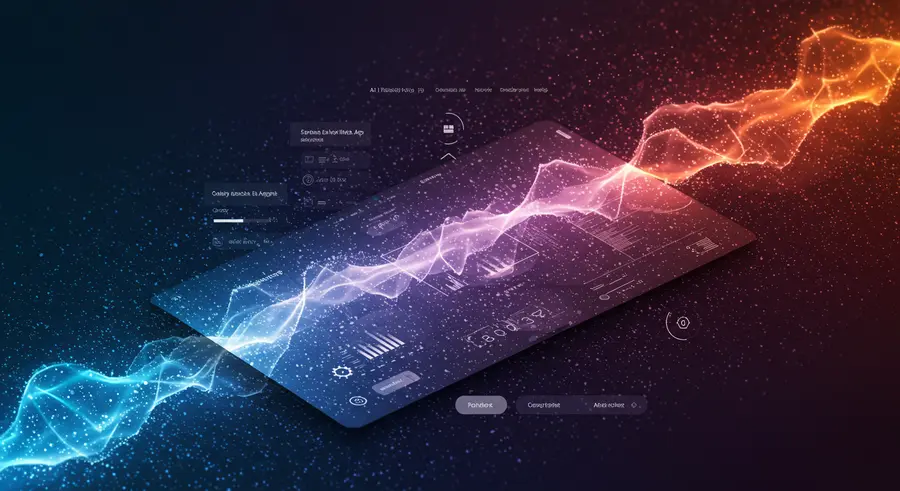Appearance

Welcome, fellow innovators and web enthusiasts! 👋 Today, we're taking a thrilling leap into the future of web development with a deep dive into AI-Powered Progressive Web Apps (PWAs). Imagine web applications that not only offer native-app-like experiences but also intelligently adapt, personalize, and interact with users in unprecedented ways. This isn't science fiction; it's the rapidly evolving reality of PWAs supercharged with Artificial Intelligence!
Why AI and PWAs are the Perfect Synergy 🤝
Progressive Web Apps have already revolutionized the web by combining the best aspects of websites and native mobile applications. They offer:
- Reliability: Instant loading, even in uncertain network conditions, thanks to Service Workers.
- Speed: Highly optimized performance for fluid user interactions.
- Engagement: Features like push notifications and home screen installation keep users connected.
Now, infuse these capabilities with Artificial Intelligence, and you unlock a new dimension of possibilities. AI brings:
- Personalization: Tailoring content, recommendations, and user interfaces based on individual behavior and preferences.
- Predictive Analytics: Anticipating user needs and actions to provide proactive assistance.
- Automation: Automating complex tasks and enhancing user workflows.
- Intelligent Interactions: Powering chatbots, voice interfaces, and smart search.
This powerful combination creates web applications that are not just present but proactive, not just functional but intelligent.
Practical Applications and Real-World Impact 💡
Let's explore some compelling examples of how AI is transforming PWAs:
E-commerce & Retail:
- Personalized Shopping Assistants: AI-powered chatbots within a PWA can guide users through product discovery, answer questions, and offer tailored recommendations based on browsing history and purchase patterns.
- Predictive Inventory Management: For businesses, AI can predict demand fluctuations, helping PWAs to display accurate stock levels and suggest alternative products proactively.
- Visual Search: Users can upload an image of an item they like, and the PWA (with integrated AI) can identify similar products available in the store.
Healthcare & Wellness:
- Personalized Health Trackers: A PWA can use AI to analyze user health data (e.g., activity, sleep, diet) and provide personalized insights, recommendations for improvement, or even predict potential health issues.
- AI-Powered Symptom Checkers: Users can describe symptoms, and the PWA can use NLP and AI models to suggest possible conditions or advise on seeking professional help.
- Medication Adherence Reminders: AI can learn user habits to send empathetic, human-like reminders for medication, improving patient outcomes.
Education & Learning:
- Adaptive Learning Platforms: PWAs can leverage AI to create personalized learning paths, adjusting content difficulty and pace based on a student's performance and learning style.
- Intelligent Tutoring: AI-powered virtual tutors within the PWA can provide instant feedback, answer questions, and offer explanations for complex topics. (Like Redmenta, an AI-powered PWA platform for teachers and students).
Content & Media:
- Dynamic Content Delivery: PWAs can use AI to understand user preferences and dynamically adjust news feeds, article suggestions, or video playlists in real-time.
- Automated Content Summarization: For lengthy articles, an AI within the PWA could provide a quick summary, enhancing user experience.
Key Technologies Enabling AI-Powered PWAs 🛠️
To build these intelligent experiences, developers are leveraging several key technologies:
- Service Workers: Still the backbone for offline capabilities, caching, and push notifications, ensuring AI models can operate even with intermittent connectivity or fetch data efficiently.
- WebAssembly (Wasm): For running computationally intensive AI models directly in the browser at near-native speeds, crucial for on-device inference.
- Web ML APIs (e.g., Web Neural Network API): Providing direct access to machine learning capabilities, allowing developers to run pre-trained models efficiently.
- Cloud-based AI Services: Integrating with services like Google Cloud AI, AWS AI/ML, or Azure AI for complex model training, real-time inference, and large-scale data processing.
- JavaScript Frameworks & Libraries: Frameworks like React, Vue, Angular, and libraries like TensorFlow.js make it easier to integrate and manage AI models within the PWA architecture.
The Road Ahead: Challenges and Opportunities 🛣️
While the future of AI-powered PWAs is bright, there are challenges to address:
- Performance Optimization: Ensuring AI models don't bloat the PWA or degrade performance.
- Data Privacy & Security: Handling sensitive user data responsibly, especially with on-device AI processing.
- Model Deployment & Updates: Efficiently deploying and updating AI models, particularly for offline use cases.
- Hardware Access: Expanding PWA capabilities to access more device hardware (sensors, advanced cameras) to feed richer data to AI models.
However, the opportunities far outweigh the challenges. As AI models become more efficient and web capabilities continue to expand, AI-powered PWAs will become the standard for delivering truly intelligent, personalized, and robust web experiences.
Conclusion 🎉
The convergence of AI and PWAs is not just an incremental improvement; it's a paradigm shift. It empowers developers to build web applications that are more engaging, more intuitive, and infinitely more intelligent. By embracing these advancements, we are not just building websites; we are crafting the next generation of digital experiences that truly understand and anticipate our needs.
Stay curious, keep building, and let's shape the intelligent web together!
This article was inspired by the content found in our Web Development Catalogue.